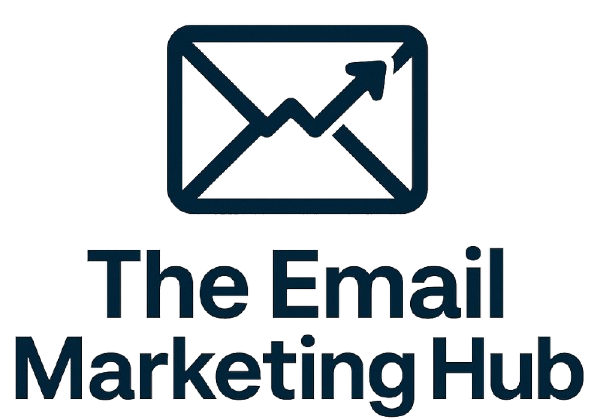Making social ads more efficient can feel like juggling eels: slippery, unpredictable, and just when you think you’ve got performance under control, the algorithm shifts. Even the sharpest teams get stuck trying to move a single metric.
The truth is, performance doesn’t come from chasing hacks or hoping a creative magically takes off. It comes from a content marketing strategy alignment across the team, the campaign, and the platforms.
At Planable, I use the 6M framework to bring focus to paid social strategy: mechanics, moment, message, medium, market, and money. When teams align on these six elements, great results follow.
In this guide, I’ll walk you through each step, and how to use this framework to run smarter, more effective paid social campaigns, no matter what Meta or TikTok throws at you next.
Rather than just a sequence, it’s an ever-improving loop:
idea → brief → assets → launch → monitor → iterate.
Everything starts with analyzing results and spotting a need, pretty much finding room for improvement in the current strategy or assets.
Once we have the campaign data, we find the next gap, wonky metric, or underperforming asset, then start iterating all over again.
Here’s an example from last month:
The insights
I noticed a retargeting Top-Of-Funnel campaign wasn’t bringing much signal or intent. CTR was low, traffic volume was poor, and overall interest was flat.
I already knew from experience that this audience responds best to educational content that builds intent, but the assets we were using were too product-y.
Basically we were talking about ourselves to people who didn’t yet know or care about our product at that point in their journey.
So the logical step was to revisit the assets and switch seats with the audience.
The exercise
This is an exercise I always practice and recommend, I ask myself:
- If I were in this stage, what kind of messaging would actually make sense?
Then I switch perspectives:
- How could I offer value while slowly guiding people toward our product?
This exercise has brought in heaps of insights and results over the years, and it’s obvious why. Pairing genuine empathy with insightful research deepens your connection with any audience.
But here’s the catch: no matter how similar you are, you’ll still have a limited overlap between your own identity and various audience segments.
The idea and the execution
With all of this in mind, I sketch out some draft ideas, then loop in our design team. We often do brainstorms together, throw everything on the table, then narrow down the final list of assets with deadlines.
After the assets are done, a method I prefer is launching them all together and basically doing a “manual” A/B test. I don’t use the A/B test that the platforms provide.
It’s a bit of a controversial method, but I prefer the traditional way because it gives me more control over the metrics I care about.
The metrics and tweaks
Then comes the fun and long part: monitoring and iterating. Short-term to catch early signals, and longer-term after the learning phase.
The close monitoring + A/B testing combo gives me insights for future campaigns as well, and every two weeks I sync with our designer to review performance.
Since the design team is involved from the start, they get visibility into results and can bring sharper input into the next creative cycle.
Bottom line: it all starts with strategy and performance needs. Never with “let’s make some new assets” just for the sake of it.
Team members joining the workflow
The stages of a project when I loop in designers, the content team, or the social media manager depend a lot on the asset and the objective. But if we’re talking ads related to a product campaign/feature launch, there are always multiple team members involved:
- Creative lead: always from the very beginning. We ping-pong ideas, look back at past assets approaches and performance, make sure everything’s on brand, and create assets that actually perform.
- Social media manager: especially for video content creation, so if there’s one needed, we work together during campaign prep. I usually draft a script as I know best who we’re addressing, then loop them in for an extra eye. We refine together and work on how to bring it to life in a way that makes sense for the brand.
- Product manager: whenever we’re working on product-specific campaigns, their input is vital. I wanna make sure what we’re presenting is accurate and that nothing critical is missing.
2. Moment: zooming in and out
When searching for insights, in addition to metrics, I like to consider our historical moment. Then I work my way from the outside in.
For example, the cost of a living crisis affects everything, but then I consider specific challenges my target audience is dealing with in this context.
If your clients include agency owners who are specifically focused on ethical treatment, fair payment, and moving toward a 4-day work week, position the features of your product or service as benefits that act in support of these goals.
Use strategic discernment every time you come across a trend, viral post, or news event. There has to be strong alignment with your tone and business goals in order to include something in your social media plan, especially when it comes to ads.
Bottom line: the insight you’re looking for might come when you consider this whole decade or a TikTok you saw yesterday. It might be in how they’re in conversation with each other. Keep zooming in all directions.
3. Message: how I craft hooks
Pain-point copy
It’s simple, obvious, but effective. I mean, it’s only simple and obvious when you have good data and a diverse, empathetic team. Ultimately, ads that go straight into “Your problem is X, here’s how we help” outperform almost everything else.
People don’t want fluff. They want you to show you get their struggles. Here are some in-house examples:
Example #1
Example #2
Real, proven numbers and info backed by data and expertise
Again, no fluff. Especially when you’re targeting a premium, senior audience, you can’t lean on the obvious, but need solid, well-reasoned insights and expert-led recommendations.
Content that clearly states it’s based on proprietary data or created in collaboration with a renowned expert has been the strongest hook for attracting quality leads.
Example #1
Example #2
Example #3
Successful offer changes vs. creative changes
Here’s a pivotal offer change from the last 90 days. We shifted from a generic CTA like “Download our guide” to specific audience-based messaging.
Small tweaks like “Exclusive insights for agencies” or “Show this to your client before they ask again for a branded hashtag” made a big difference.
I wouldn’t say this beats creative changes though, I see it more as complementary. But pairing the right targeting with the right messaging almost always outperforms a pretty visual on its own.
Example
4. Medium: swimming upstream against platform changes
If I had to pick my top struggle right now between resourcing, approvals, data, and platform limitations, I’d definitely go with the last one.
Platform limitations can be an ongoing headache. Over the past year, I’ve focused a lot on driving higher-quality leads and sometimes kept running into walls because of missing features on Meta.
Instant forms are still clunky. You can’t restrict fields to work emails, and you can’t disable autofill, which means you end up with lots of junk or inactive addresses.
And then there are the constant overnight changes, plus the push toward full AI automation that sometimes affects the quality of targeting or creative control.
In my practice, I’m all for leaving room for the algorithm to learn and optimize. But I’m also a firm believer that it’s your duty as an expert to steer it back toward the bigger picture, strategy, and business goals.
5. Market: knowing your audience deeply, respectfully
Here’s one of my biggest lessons from the latest premium-content campaigns. It wasn’t a surprise as much as a reminder; sometimes those simple, obvious things are exactly the ones that do the trick.
Are you trying to reach agencies? Then talk to them as equals. Show that you understand their day-to-day struggles and that you have a useful read or solution to help with exactly that.
Combine this with precise targeting to make sure your message actually reaches the right audience.
Here’s an example with an ad targeting agencies on LinkedIn. It showcases how we’re only talking to specific professionals from advertising agencies.
The creative we used for that audience:
Debatable topics spark curiosity
The more your ad feels like “I have an opinion worth discussing,” the more people jump in.
This is the comment section for the ad above:
A very important asterisk here, since we’re on the topic of advertising agencies and debates: watch out for brands that put out campaigns all about “coming together” and being “less divided”.
In many cases, a deeper look will reveal that they’re giving equal space to things that aren’t equal at all, such as a historically marginalized minority and the category of people benefiting from that marginalization. This is called bothsidesing and I’d never recommend it, it’s unethical.
Look out for the power imbalance when gathering hot, debatable topics. This one lens will keep your list strong and sharpen the messaging.
6. Money: budgets and strategic goals prioritize each other
Most of the time, my strategic goals guide the use of our available budget. But sometimes, shifts in the budget help illuminate priorities among objectives.
Either way, I find it healthy and useful to ask myself these two questions at least quarterly:
What would I add with +20% budget?
I would double down on top performers that align directly with the account’s end goal, my strategy, and key objectives.
That could be a campaign that consistently delivers high-quality leads, or a niche-targeting campaign I know has potential and just needs an extra push.
Alternatively, I’d run a short-term, high-budget test to validate a theory. I firmly believe social ads are all about testing, testing again, and then still testing once you’ve found something that works because it might get even better. Never rely on a one-fits-all formula.
What would I remove with -20% budget?
I’d go minimalist and consolidate campaigns. I’m guilty of spreading budgets too thin sometimes, but too many campaigns just create chaos: harder to manage, harder to analyze, harder to optimize. And honestly, you end up focusing on control, working against the algorithm.
No need for that. Fewer moving parts mean more focused spend and clearer paths to results. Think big picture, and you’ll quickly see you probably need fewer campaigns than you think.
I’d also get rid of the high-cost intruders. Sometimes you need the guts to cut an inefficient campaign, even if it means pausing promotion for a product or feature.
If the cost per result is way off and you’ve already seen it’s not working, it’s better to put a lid on it sooner rather than later.
Put your own spin on my formula
There you have it. Keep an eye on these 6 Ms (mechanics, moment, message, medium, market, and money), then use them to create a reliable strategic framework.
Test everything, then test again. Taken together, these practices will bring out the best in your team when collaborating on social media ads.
Performance Marketer @Planable | 3+ years in digital marketing, paid ads, and social media. I love approaching every project from an artistic angle and adding just a dash of creativity to make it not only impactful but also *pretty*.

